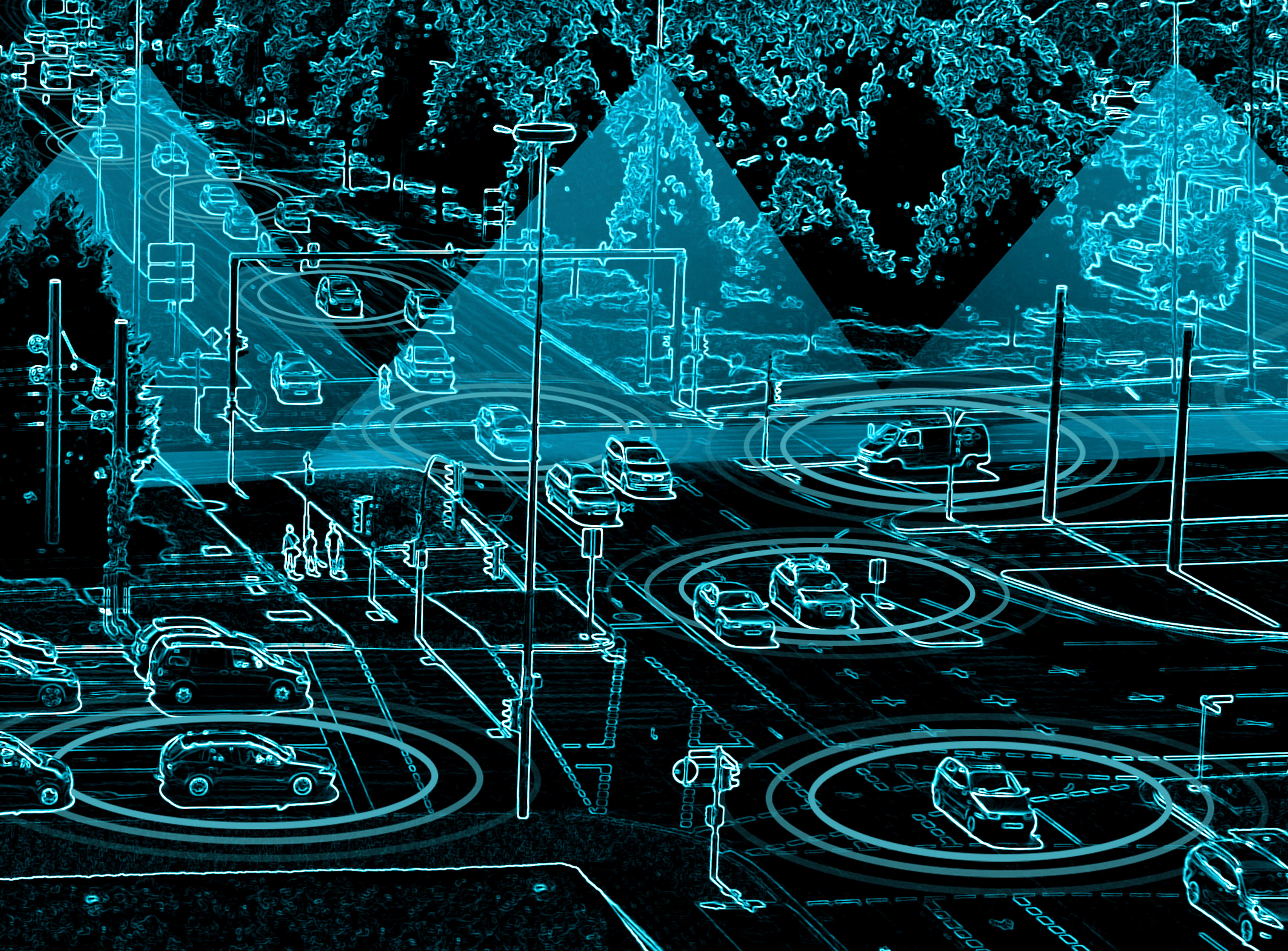ITS World Congress 2021
Smart Intersection communicates with partially automated vehicles in a trustworthy manner

Together with industry partners, the Fraunhofer Cluster of Excellence Cognitive Internet Technologies CCIT is advancing automated driving in cities: An Smart Intersection in Hamburg's city center records the movements of road users and processes the information in a trustworthy manner that partially automated vehicles can navigate safely through the intersection. Visitors to the ITS World Congress can get an idea of how the cognitive Internet technologies used work via direct connection at booth B7330 (Hall B7).
The vehicle has automatically set the turn signal. The traffic light turns green. The car starts moving independently. The steering wheel steers to the right. Then the vehicle stops gently. Pedestrians and cyclists cross the street. Only when the road is clear does the car start moving and the driver receives the message: The route is being continued automatically.
In order to get a step closer to the vision of an automated mobility, Fraunhofer CCIT is bringing an Smart Intersection onto the road together with industry partners on the occasion of the ITS World Congress trade fair. The Smart Intersection communicates with partially automated vehicles on the Test Track for Automated and Connected Driving (TAVF) near the Hamburg exhibition grounds.
Digital object map determines position of traffic
From a bird's eye view, the Smart Intersection detects all movements on the asphalt as well as the pedestrian and bicycle paths: By using video, radar and lidar sensors, the infrastructure is able to significantly expand the sensor-ego perspective of the vehicles, i.e. the area that the vehicles themselves can see. Twenty-four hours a day, seven days a week, the intersection learns from the movement patterns of road users and uses the data to design a digital object map with the help of artificial intelligence (AI). "Via radio technology, information is forwarded to partially automated vehicles that they need to navigate safely through the intersection," says project manager Dr. Thomas Otto of the Fraunhofer Institute for Transportation and Infrastructure Systems IVI.
Cooperation of interdisciplinary research areas
"As far as we know, the overall system is unique in this form. Its development was only possible through interdisciplinary collaboration between different research areas within the Fraunhofer Research Cluster," says Otto. The Fraunhofer Institutes for Applied and Integrated Security AISEC, for Telecommunications, Heinrich Hertz Institute, HHI, for Integrated Circuits IIS and for Transportation and Infrastructure Systems IVI are involved, contributing their expertise in the areas of cyber security, broadband communications, radio and satellite communications and intelligent transportation systems.
Inner-city intersections are among the so-called critical infrastructures (CRITIS) that require special protection. "All the data collected is consistent, secure from attack and manipulation, and in the next development step could be stored in a trustworthy manner in Fraunhofer's Mobility Data Space in the future," says Otto.
Applied research for practical use
The project manager is confident that the technology will soon be used in practice. Otto: "In the future, it will be conceivable not only to pass on information, but also to use intelligent intersections to perform assistance functions - for example, in simple, demarcated scenarios, such as on company premises. Inner-city intersections, on the other hand, are more complex. Here, there is still a need for a research push in sensor and radio technologies as well as in national as well as international standardization."
Further information on Fraunhofer CCIT's presence at ITS World Congress 2021 can be found here.
Prof. Claudia Eckert, spokesperson for the Steering Committee of the Fraunhofer CCIT
"The Smart Intersection plays an important role for the mobility of the future. In particular, it enables the development of preferred routes for autonomous driving in cities and the next development step from partially to fully automated driving. This trend promises to make traffic faster, more economical, more environmentally friendly and safer.
The industry's interest shows that the bundling of different research competencies at Fraunhofer CCIT is the right approach to not only decisively advance modern traffic concepts, but also to implement them."
Christian Banse, Head of Central Office Fraunhofer CCIT

"Road intersections are the central nodes of inner-city traffic. To exploit the potential of autonomous driving, we need to develop them into Smart Intersections.
This can be done with cognitive internet technologies such as smart, trusted sensors, secure data spaces and highly intelligent, controllable AI applications."
 Fraunhofer Cluster of Excellence Cognitive Internet Technologies CCIT
Fraunhofer Cluster of Excellence Cognitive Internet Technologies CCIT